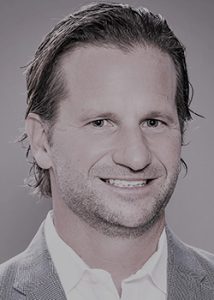PUBLIC SECTOR ENTITIES
Today’s challenges prompt consideration of new approaches to risk transfer for municipalities and other public bodies
By Joseph S. Harrington, CPCU
What’s driving increases in the cost of risk for municipalities, school districts, and other public bodies? Pretty much the same things that are driving up the cost of risk in every other sector, according to Sue Coates, president of Trident Public Risk Solutions.
“Cyber risk, exposure to extreme weather events, high inflation, and rapidly rising loss costs represent significant challenges for municipalities,” she says. “Loss costs have been rising due to pressures from litigation funding and social inflation, as well as the increasing frequency and severity of natural disasters and cyberattacks.

“Apart from the losses themselves, these risks represent volatility for insurance providers,” she adds. “Municipalities with a history of loss may find it challenging to secure policy terms or pricing in line with what they’ve secured in the past.”
Insurers that write public entities are overhauling their pricing methodologies, according to Brian Frost, executive vice president of Amwins Brokerage.
“Actuarial departments are reconsidering their premium-to-limit ratios, rate sufficiency benchmarks, tower relativities, and layer payback analyses in light of increased loss severities and compressed payout patterns from historical experience,” he says.
Shift toward retention
As a result, Frost detects a shift towards increased risk retention by both individual risks and municipal pooling entities, a shift that is implemented by elevating attachment points, establishing quota shares within layers, and/or increasing corridor deductibles. (Corridor deductibles are essentially aggregated amounts of first-paid loss within a layer.)
“Alternative approaches are starting to garner increased attention among risk managers and pool administrators,” he says. “These include structured solutions with aggregate limits stretching across multiple years with retrospective pricing mechanisms.”

Frost believes the recent rise in interest rates will support the shift toward self-funding of risk by individual entities and pools. “For buyers, assumptions regarding investment rates of return can be moved upward, resulting in more favorable net present value calculations,” he says.
Coates finds most municipalities to be in a strong financial position to consider self-funding of risk. In today’s interest rate and investment environment, she says, “municipal bonds are currently a strong vehicle for providing ready access to funding when needed.”
School risk
So far at least, a shift toward risk retention is not pronounced among school districts, according to Sara DePasquale, an underwriting officer for Liberty Mutual.
“We’re not seeing significant movement in that direction,” she says. “Our book is largely guaranteed cost coverage, and we will take on claims handling for our clients that select one of our group cooperative or self-insured retention programs, but we’re not seeing much movement toward them.”
The risk landscape for public schools is changing quickly and dramatically, according to Anna Morgan, senior underwriting manager, public entity, for Liberty Mutual.

Far from the days when schools and school leaders were held in high esteem and treated with deference, “school boards have become pawns in a political game with polarizing views,” Morgan says. Any perceived harm to or transgression against a student, staff member, or the public stands a good chance of ending up in court.
The fact that federal courts are increasingly the venue of choice for complaints of unfair discrimination, along with a slow erosion of the doctrine of sovereign immunity in state courts, leaves public schools and their leaders exposed to greater liability and subject to the impact of social inflation of jury awards.
In light of a series of traumatic school shootings, the most ominous among the growing risks facing public schools are threats to the physical safety of students and staff.
“Schools are now expected to be more proactive regarding security threats,” says DePasquale. “States are now requiring schools to undertake threat assessments and take appropriate action against anyone who could be a security threat.”
“Municipalities with a history of loss may find it challenging to secure policy terms or
pricing in line with what they’ve secured in the past.”
—Sue Coates
President
Trident Public Risk Solutions
Public safety liability

Issues of public safety present a “damned if you do, damned if you don’t” dilemma for public bodies, which commonly find themselves or their officers accused of being too zealous or too lax in enforcing the law.
When it comes to liability exposure for police misconduct, a host of dynamic factors come into play, according to Frost.
“Insurance coverage for police misconduct is impacted by legislative action at the state level concerning qualified immunity as well as departmental funding allocations,” he says. “Public safety and prosecutorial departments face growing allegations of wrongful incarceration, enhanced by DNA technology improvements, as well as violation of constitutional rights assertions, and the subsequent opening of the Federal court venue, in a landscape of heightened media scrutiny. At the same time, they must manage officer retention, training and attrition.”
The role of distributors
Insurance producers and intermediaries have an important role to play in helping public bodies manage their risks.
“It’s almost certain that your municipal clients will need to reassess their exposures and purchase higher limits to avoid a protection gap,” says Coates. “They will need to think critically about risk-sharing and consider higher deductibles and retentions as options to balance risk management strategies.
“States are now requiring schools to undertake threat assessments and take appropriate
action against anyone who could be a security threat.”
—Sara DePasquale
Underwriting Officer
Liberty Mutual
“Focus on enterprise risk management and on helping your public sector clients establish priorities that identify critical funding and infrastructure requirements.”
“Distribution partners must focus on facilitating direct interaction with key public stakeholders—risk managers, operational heads, and pool administrators—as well as underwriters and claims managers,” says Frost. “Building trust and credibility and establishing a shared approach to the handling of risk and adjudication of claims cannot be gleaned from spreadsheets and applications.”
“Ultimately, it all comes down to the sustained partnership of the agent, broker, risk manager and insurer,” Morgan concludes.
For more information:
Amwins Brokerage
www.amwins.com
Liberty Mutual
www.libertymutual.com
Trident Public Risk Solutions
www.paragoninsgroup.com/our-brands/trident-public-risk
The author
Joseph S. Harrington, CPCU, is an independent business writer specializing in property and casualty insurance coverages and operations.





